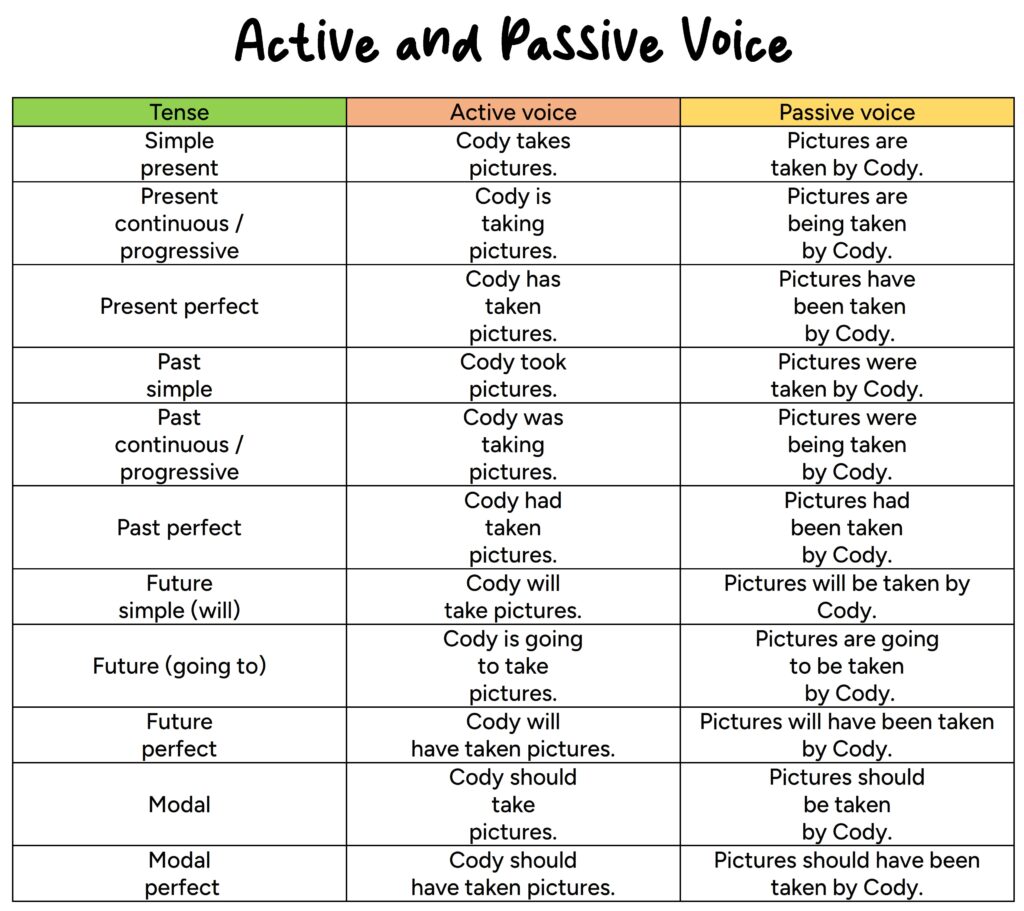In this section you will learn about the active and passive voice with structures and examples.
What is the active voice?
The active voice is the most common grammatical construction where a subject performs an action in a sentence and the object is affected by that action.
Subject + verb + object
Caroline adopted a dog. (subject = Caroline, verb = adopted, object = a dog)
The postwoman delivers the mail. (subject = the postwoman, verb = delivers, object = the mail)
Tobias is writing a blog. (subject = Tobias, verb = is writing, object = a blog)
What is the passive voice?
The passive voice is a grammatical construction where the structure of the active voice is reversed in the sentence; therefore, the object in the active voice becomes the subject, the subject becomes the object, the verb ‘to be’ is added and conjugated (depending on the tense), and it is followed by the past participle of the main verb.
How do you use the passive voice?
Object + to be + main verb (past participle) + subject
A dog was adopted by Caroline. (object = a dog, to be = was, main verb = adopted, subject = by Caroline)
The mail is delivered by the postwoman. (object = the mail, to be = is, main verb = delivered, subject = by the postwoman)
A blog is being written by Tobias. (object = a blog, to be = is being, main verb = written, subject = by Tobias)
Uses of passive voice
One of its uses is when use it when the doer is unknown or unimportant.
The car was hijacked. (unknown)
Your package was delivered in the afternoon. (unimportant)
We also use it to emphasize the doer.
The printing press was invented by Johannes Gutenberg.
Another use is when we want to sound more polite (it is commonly used in technical writing)
The problem will be notified.
We use it when the doer is obvious, so it is not mentioned.
The car has been repaired. (the car was repaired by a mechanic)
We use it in news, headlines, processes or announcements.
Many citizens have been affected by the recession.

Read more about English grammar here.